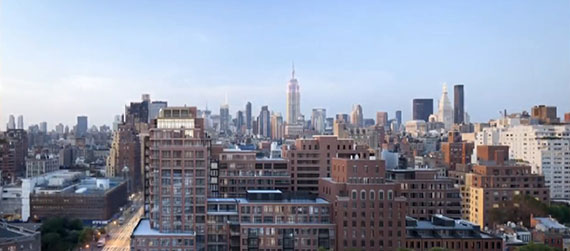BY ELISSA STEIN | Reminiscent of gutted stretches of the Upper East Side making way for gleaming, luxury buildings, the soon-to-be The Greenwich Lane site is already promoting an air of exclusivity, seemingly at odds with the sense of community so inherent to the West Village.
According to its Web site, the buildings “…all come together to surround one lush central garden. … The garden is just one of a staggering array of private amenities, all presented at a level of discretion unheard of in most West Village residences.”
It sounds remarkably like a concentrated-wealth, gated community is taking shape in a neighborhood known in the not-to-distant past for inclusion of all sorts.
During the planning process, a community groundswell of complaints made sure the impending tower wasn’t too tall, that the total number of apartments wasn’t too large, and that potential problems of local school overcrowding were addressed. But other issues, like affordable housing options being included in the development, didn’t make the to-do list. Nor did making sure the Lower West Side would again have a fully functioning hospital.
As recently reported by The Villager, the number of apartments in The Greenwich Lane has now been reduced from 350 to 200. And while no floor plans or prices are available yet, one can register at The Greenwich Lane’s Web site, which notes the condos’ prices will generally range from $2 million to $20 million.
Some residents note that perhaps the development will bring retail back to the neighborhood, which has seen too many store closings as of late. But the other side of that coin is that new shops that would appeal to this upscale clientele could be far too expensive for many locals. While many still mourn the loss of Joe Jr. (the much-beloved diner), Jon Vie (the French bakery on Sixth Ave. that gave free cookies to kids for more than 45 years), Jefferson Market, even Food Emporium, along with many other mom-and-pop shops, it seems unlikely The Greenwich Lane, on the site of the defunct St. Vincent’s Hospital, will encourage reasonable, small-scale, local commerce.
While the developers can’t be blamed for the hospital’s closing, they can be held responsible for other issues, like the contentious rezoning of local elementary schools. The influx of so many new apartments and fear of additional overcrowding means that soon families living a block away from P.S. 41 will no longer be able to send their kids there. And while the developer, the Rudin company, is donating money to fund public-school art programs and a nonprofit group that supports affordable housing, the exclusion of affordable housing in this massive project all but guarantees additional challenges for the middle class in continuing to call the West Village home.
For a section of the city rooted in history, landmarks and diversity, this impending elite enclave is a reflection of Manhattan’s new reality as a whole. The West Village had seemed impervious to this trend, but this vast development is proving even this long-established, seemingly protected community is not immune to large-scale change. Progress and growth are vital, but this movement to exclusively upscale could undermine what makes this neighborhood so unique.


















